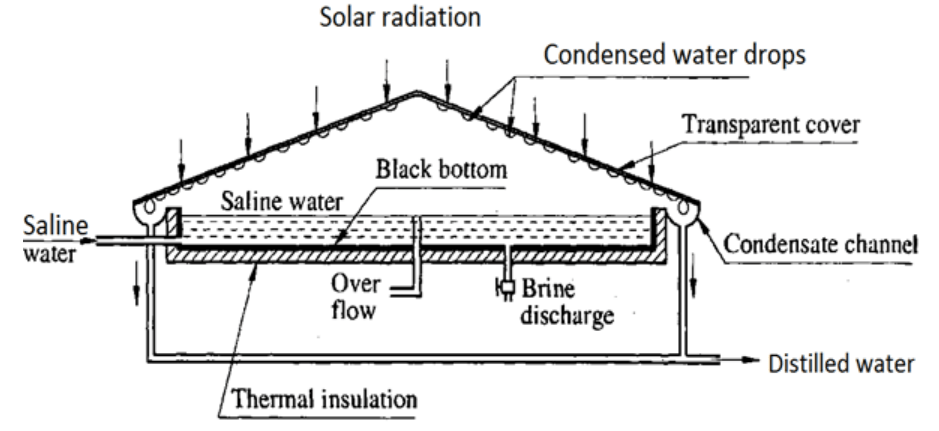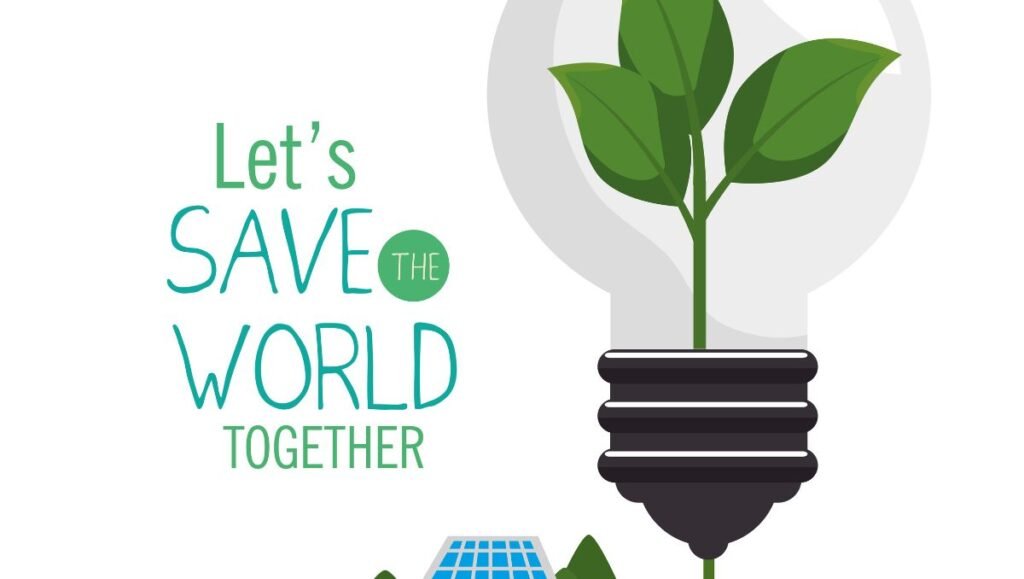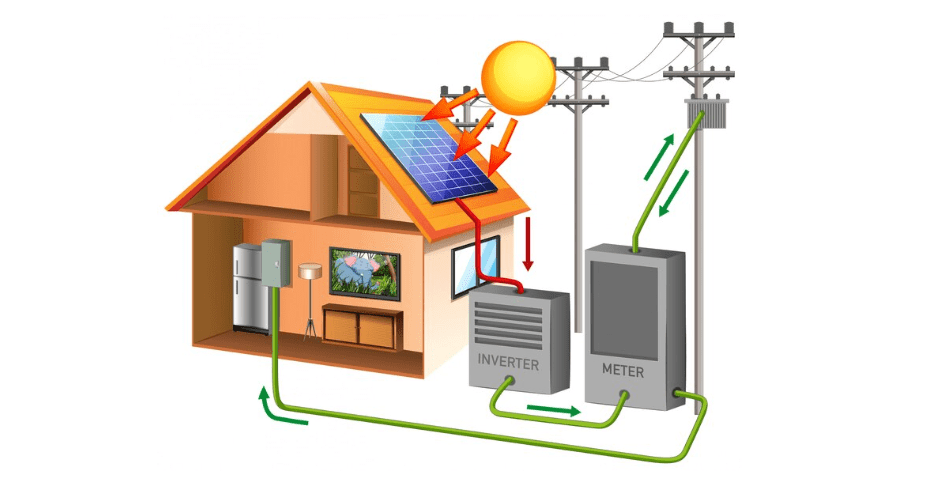One of the major problems in many parts of world is the scarcity of fresh water (water with less than 500 ppm salt content). Due to climate changes and less rainfall in many parts of the world, fresh water which was available in abundance from rivers, lakes and ponds, is becoming scarce. Also the available resources are getting polluted due to discharge of industrial effluents and sewage in large quantities.
In this area solar energy is plentiful and can be used for converting saline water into distilled water with help of distillation process. Solar distillation process is considered to be one of the simplest and widely adopted techniques for converting sea water into fresh water.
Here in this blog post we have learn about “What is the Solar Still or Solar Water Distillation”.
Table of Contents
ToggleDefinition of Solar Still
A solar still is a simple device which converts saline water into fresh water using heat of the sun. Several types of solar stills have evolved. However, only the Basin type solar still has been tried commercially on the large scale.
Working principle of Solar Still

The basic principles of solar water distillation are simple yet effective, as distillation replicates the way nature makes rain. The sun’s energy heats water to the point of evaporation. As the water evaporates, water vapour rises, condensing on the glass surface for collection.
This process removes impurities such as salts and heavy metals as well as eliminates microbiological organisms. The end result is water cleaner than the purest rainwater.
The basic design of a solar still consists of a sloped, transparent cover over a shallow basin. Contaminated water is poured into the basin, and as the sun heats the water, it evaporates, leaving behind contaminants such as salts, heavy metals, and pathogens.
The evaporated water then condenses on the underside of the cover and drips down into a collection channel, where it is collected as clean, drinkable water.
Types of Solar Stills
There are three types of Solar still. Here is
Single-Slope Solar Still
A Single-Slope Solar Still is a type of solar still that uses a simple design to purify water using solar energy. It consists of a sloped, transparent cover placed over a basin containing contaminated or saline water. The sun’s heat causes the water to evaporate, and as the vapor rises, it condenses on the underside of the cover. The condensed water then drips down into a collection channel and is collected as clean, drinkable water.
Double-Slope Solar Still
A Double-Slope Solar Still is a type of solar still that, similar to the Single-Slope Solar Still, uses sunlight to purify water. The main difference lies in its design, which features two sloped surfaces instead of one, increasing the surface area exposed to sunlight.
Double-Slope Solar Stills offer a more efficient means of water purification in areas where access to clean water is limited, making them a valuable tool in addressing water scarcity and improving water quality.
Multiple-Effect Solar Still
A Multiple-Effect Solar Still is an advanced type of solar still that incorporates multiple stages or chambers to enhance the efficiency of water purification. Unlike traditional solar stills, which have a single evaporation-condensation cycle, multiple-effect solar stills use a series of chambers to create a multi-stage distillation process.
Advantage of Solar Still
It is a relatively cheap and low-maintenance system.
It can be used at the household level and scaled up through programmatic approaches.
There are climate change adaptation and mitigation benefits.
There are no energy costs.
There are no moving parts.
Disadvantage of Solar Still
Rate of distillation is usually very slow (6 litres of water per sunny day).
It is not suitable for larger consumptive needs.
The materials required for the distiller may be difficult to obtain in some areas.
If not correctly disposed of, the distillation process waste stream can be a potential source of environmental pollution (high concentrations of salts and pollutants).
Solar energy is only available during the day.



Thank you
Such a great assistant